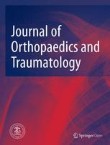The effectiveness of vibration therapy for muscle peak torque and postural control in individuals with anterior cruciate ligament reconstruction: a systematic review and meta-analysis of clinical trials
The study aimed to review and summarize the existing evidence on the effectiveness of vibration therapy (VT) compared with conventional rehabilitation in ACL-reconstructed patients. The methodology used included database search for published studies investigating the effects of VT. VT was found to significantly improve:
- hamstring peak torque,
- quadriceps peak torque.
The study suggest that VT can be effective in rehabilitation of ACL-reconstructed patients.
Prepared on the basis of:

The effectiveness of vibration therapy for muscle peak torque and postural control in individuals with anterior cruciate ligament reconstruction: a systematic review and meta-analysis of clinical trials. Maghbouli N, Khodadost M, Pourhassan S. J Orthop Traumatol. 2021 Jul 14;22(1):28
Introduction
Approximately 250,000 anterior cruciate ligament (ACL) injuries occur annually in the USA. Individuals with ACL injuries are three to five times more likely to develop knee osteoarthritis (OA) than healthy controls. Quadriceps isokinetic strength deficits have been reported following ACL injury, reconstruction, and rehabilitation between 6 months and 15 years.
The phenomenon of ACL-injured patient’s deficit in postural control during single-leg stance with both eyes closed has an important role in the design of ACL injury rehabilitation programs. At the same time, traditional rehabilitation programs are unable to restore muscle function in association with neural inhibition according to arthrogenic muscle inhibition (AMI).
Innovative rehabilitation methods are needed to fight AMI: vibration therapy (VT) has been reported to improve muscle function, even on the basis of electromyography studies. Its effectiveness in neuromuscular control is mediated by additional mechanisms, including motor unit synchronization, central control, and intramuscular coordination. The aim of this publication was to review and summarize all available evidence to assess the effectiveness of VT for quadriceps and hamstring strength, and postural stability in ACL-reconstructed individuals.
This systematic review and meta-analysis was based on the Preferred Reporting Items for Systematic Reviews and Meta-Analyses (PRISMA).
- 13 studies were included in the meta-analysis, out of 696 records initially identified through databases.
- VT significantly improved hamstring peak torque [weighted mean difference (WMD) 12.67, 95% CI 4.51–20.83] and quadriceps peak torque (WMD 0.11, 95% CI −0.06 to 0.29).
- Subgroup analysis showed a significant increase in muscles’ peak torque in studies employing interventions including both local muscle vibration (LMV) and vibration frequency higher than 100 Hz (WMD 20.84, 95% CI 11.75–29.93).
Results and conclusions
All studies have declared frequency of vibration (10–300 Hz), while amplitude and acceleration were reported in seven and three studies, respectively. Duration ranged from 2 to 12 weeks, while five studies lacked data in this regard. The frequency of intervention use was different, ranging from two to eight times a week. All studies used VT in knee flexion position. The outcome measures of interest were quadriceps/ hamstring peak torque and postural control.
Effectiveness of VT versus conventional rehabilitation for hamstring peak torque
According to VT frequency, the subgroup with F<50 Hz showed a WMD of 9.56 (95% CI 7.14–14.97), and the subgroup with F>100 Hz had increased WMD of 20.84 (95% CI 11.75–29.93). There was no significant heterogeneity following subgroup analysis (I2 0.0%, P=0.698).
Effectiveness of VT versus conventional rehabilitation for quadriceps peak torque
Total WMD was 0.11 (95% CI −0.06 to 0.29) with significant heterogeneity (I2 81.6%, P<0.001). Following subgroup analysis, the subgroup with vibration frequency >100 Hz showed WMD of 0.30 (95% CI 0.17–0.44) compared with the control group, and heterogeneity proved to be insignificant.
Effectiveness of VT versus conventional rehabilitation on postural control
After subgroup analysis, although heterogeneity status improved (I2 18.4%, P=0.268 and I2 27.4%, P=0.254), WMD was again in favor of conventional rehabilitation, except for vibration frequency of 50–100 Hz with WMD of 2.82 (95% CI 1.37–4.27) but with only one study included in this subgroup.
The study concluded that VT, especially LMV type with vibration frequency higher than 100 Hz, can be effective in rehabilitation of ACL-reconstructed patients. Although there was improvement in the peak torque of hamstring and quadriceps muscles, no significant improvement was observed in postural control, especially closed-eye, in comparison with conventional rehabilitation.
More in:


